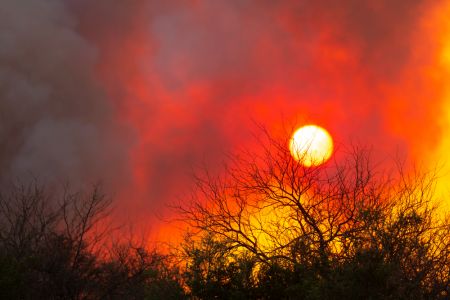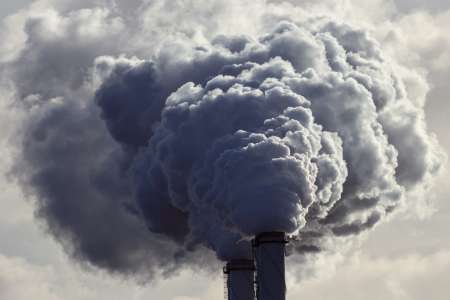Melting Permafrost Is Accelerating Climate Change Problems
As permafrost thaws, it releases vast stores of carbon and methane that have been locked away for centuries, accelerating global warming and altering weather patterns. This hidden process not only speeds up climate change but also threatens infrastructure and ecosystems in Arctic regions and beyond. Understanding the scale of permafrost melt and its impacts is critical—discover the risks it poses and what actions we can take to slow this dangerous cycle and protect our planet.
10/06/2024

Understanding Permafrost
As the name implies, permafrost is soil frozen at or below 32°F (0°C) for long periods. Permafrost can be found in all countries surrounding the Arctic regions, on the tops of Southern Hemisphere mountains, and beneath the Antarctic ice sheets. While most think of it as a land-based phenomenon, less known is that tens of billions of tons of methane and even more organic carbon are locked in permafrost beneath the Arctic oceans.
Land that remains continuously frozen for at least two years is, by definition, considered permafrost. The depth of permafrost can vary from just a few feet to thousands of feet and contains everything from rock and soil to the preserved remains of ancient forests and animals. Millions of square miles of land meet these definitions in the Northern Hemisphere alone, and the vast amounts of carbon there are especially concerning regarding climate change.
Problems When Permafrost Melts

A lake in the Gates of the Arctic drained after its bank thawed. Scientists are concerned about the release of stored carbon and methane. Credit: NPS/Flickr
Permafrost poses no immediate threat as long as it is frozen. Unfortunately, it is melting at an alarming rate and contributing to the global climate crisis. No discussion of climate change is complete without understanding the implications of this melting.
In temperate areas, where the land is not permanently frozen, carbon-containing matter breaks down gradually, releasing methane, carbon dioxide, and other gases over time. In contrast, permafrost prevents this decomposition process until thawing occurs, and when it does, the release of these gases happens rapidly, as is currently happening.
Imagine placing a steak in your freezer for decades. Over time, it would develop freezer burn, but it wouldn’t decompose until you took it out of the freezer. Now, exposed to warm temperatures, the long-delayed decomposition process would begin releasing unpleasant gases into your kitchen. Now, imagine this happening on a global scale. Instead of a foul smell in your home, worldwide, billions of tons of methane and carbon dioxide would be released into the atmosphere, driving further warming of our planet.
This scenario is exactly what’s happening as permafrost around the world thaws. Once-frozen carbon materials rapidly decompose, releasing massive amounts of harmful gases. As the permafrost melts across increasingly vast land areas, the scale of these emissions is staggering. Some estimates suggest that up to 100 billion tons of carbon could be released from thawing permafrost areas worldwide.
The Dangerous Feedback Loop

Slump D is a massive retrogressive thaw slump on Herschel Island. The ~30 m tall headwall retreats ca. 10 m/yr, while the slump measures 400 m across. Boris Radosavljevic/flickr
Even more troubling is the feedback loop this creates. Simply put, the released gases cause global temperatures to rise, accelerating permafrost melting. This cycle is dangerous and may become impossible to stop if unchecked. And the damage isn’t just to the climate.
As the frozen ground collapses and shifts, homes, roads, and other infrastructure are being destroyed in Northern Hemisphere communities. Roads buckle, train tracks warp, and pipelines break, with costs already soaring into the billions. The current price tag for these damages is nothing compared to the projected costs—estimated to be as much as $50 trillion if global climate change is not addressed by the end of the century.
Act Now to Prevent the Worst

Thawing permafrost on Herschel Island, Yukon, Canada. Photographer: Gonçalo Vieira/Nunataryuk, CC BY-NC-SA 2.0 via flickr or https://www.grida.no/resources/13549
We are standing on a ticking time bomb beneath our feet as once-frozen lands now release dangerous gases into the atmosphere at an alarming rate. If we don’t act now, we risk the further acceleration of climate change, leading to rising sea levels that could flood coastal cities, make once-fertile land barren, and turn habitable regions into places where humans can no longer survive.
Our planet—and every living thing on it—is at a crossroads. The biofeedback loops continue to worsen as the atmosphere continues to warm. The release of extraordinary amounts of carbon dioxide and methane will exacerbate these climatic changes, our food security, and even human survival in many areas.
The time to act is now. Please share this post, learn about the impact of climate change on permafrost, and get involved in movements pushing for climate action. Together, we can protect our planet, the only home we have.




















